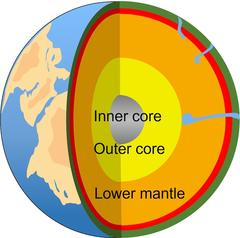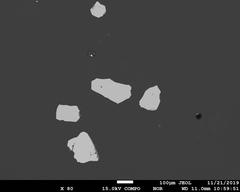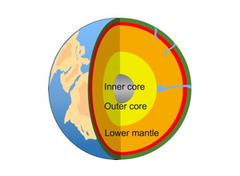URL: https://www.desy.de/news/news_search/index_eng.html
Breadcrumb Navigation
DESY News: Water is seeping deeper into Earth than expected
News
News from the DESY research centre
Water is seeping deeper into Earth than expected
Water is transported deeper into Earth than scientists had expected. An X-ray study of water bearing minerals show these compounds to be stable even under conditions of the lower mantle. “Within these minerals, water can be transported as far as 1300 kilometres underground,” explains Xinyang Li from DESY and GFZ German Research Centre for Geosciences in Potsdam, main author of the study that was conducted at DESY's X-ray light source PETRA III. “That is about 200 kilometres deeper than what was known before.” The team reports the results in the journal Geophysical Research Letters.

To answer this question, the team examined a mineral group called the dense hydrous magnesium silicates or DHMS. Using a large volume press at GFZ, the scientists synthesised samples of superhydrous phase B, one DHMS, at 19 gigapascals (190,000 times the atmospheric pressure) and 1100 degrees Centigrade close to the composition expected in the subducting slabs. The key ingredient here was aluminium oxide (Al2O3), which can be present in DHMS but was not integrated in the samples of previous studies of this type.
Grains of these samples, about 0.01 millimetres in diameter, were then X-rayed at DESY's Extreme Conditions Beamline P02.2 at PETRA III, while they were compressed to pressures of up to 55 Gigapascals and heated to 2200 degrees Centigrade – the conditions of the deep mantle. The bright X-rays allowed to record the inner structure of the mineral in real time and to determine at what conditions the mineral decomposes and what decomposition products occur.

Grains of the superhydrous mineral under the electron microscope. The individual samples measure only fractions of a millimetre. Credit: DESY/GFZ, Xinyang Li
The authors showed that the incorporation of Al significantly increases the stability of the samples by up to 500 degrees Centigrade, which means that these mineral phases, known to be very sensitive to temperature, can survive even in the very hot conditions of Earth’s mantle. “Our measurements show that Al-containing samples can remain stable even at the temperature of normal mantle conditions,” said co-author Monika Koch-Müller from GFZ.
“If we make a comparison with aluminium free systems, which are insufficient to simulate the composition of the real Earth, our results with a more realistic composition indicate a higher water storage capacity in deep subducted oceanic plates,” added co-author Sergio Speziale, also from GFZ. The additional amount of water that can obviously be stored in the mantle is difficult to determine.
“This observation changes the picture of water circulation in the deep Earth,” emphasised Xinyang Li. “We believe that it can help to understand some of the still unexplained issues of geophysical signals from the deep mantle that present a problem to the current standard model of the deep Earth.”
The project was supported by the Centre for Molecular Water Science (CMWS) as part of the early science program. The CMWS is an initiative of more than 60 partner institutions worldwide to set up an institute dedicated to water research at the DESY campus in Hamburg.
Reference:
Phase Stability of Al-Bearing Dense Hydrous Magnesium Silicates at Topmost Lower Mantle Conditions: Implication for Water Transport in the Mantle; X. Li, S. Speziale, M. Koch-Müller, R.J. Husband & H.-P. Liermann; Geophysical Research Letters, 2022; 10.1029/2022GL098353




